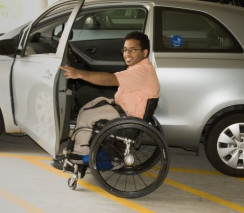Spasticity and mobility outcomes following traumatic brain injury (TBI)
Member: AUD 15.00
Non-Member: AUD 25.00
SEVERITY AND DISTRIBUTION OF SPASTICITY DOES NOT LIMIT MOBILITY OR INFLUENCE COMPENSATORY STRATEGIES FOLLOWING TRAUMATIC BRAIN INJURY
Presenter: Banky M
This Modules addresses:
Questions: Does the severity of lower limb spasticity effect mobility
outcomes following traumatic brain injury? Does the distribution of
spasticity influence proximal compensation strategies following traumatic
brain injury?
Conclusion: The ability to generate ankle power has a large impact on
mobility outcomes following traumatic brain injury. Although spasticity
was prevalent, the severity did not impact mobility outcomes. Proximal
compensation strategies were not influenced by the presence or
distribution of lower limb spasticity following traumatic brain injury.
Key Practice Points:
• The distribution and severity of lower limb spasticity did not impact
mobility outcomes or proximal compensation strategies following
traumatic brain injury.
• The ability to generate ankle and hip power has greater association with
mobility outcomes than the distribution and severity of spasticity.
• Clinical measures of lower limb spasticity may not be valid.



.png)

